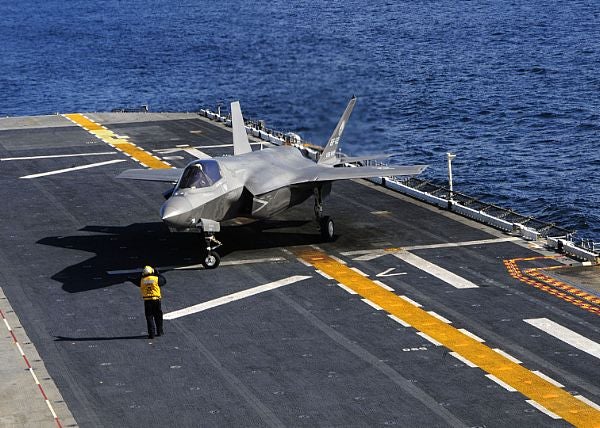
The US Marine Corps’ Lockheed Martin-built F-35B Lightning II joint strike fighter (JSF) has successfully completed its 500th vertical landing and is preparing for sea trials.
Scheduled to start next week, the F-35B test aircraft, also known as BF-1, will undergo trials onboard the US Navy’s first Litton Ingalls Shipbuilding-built Wasp-class amphibious assault ship, the USS Wasp (LHD 1).
The sea trials, also known as developmental test two (DT-2), will be the second of three planned tests which have been designed to define and expand the shipboard operating envelope of the BF-1, a short take off and vertical landing (STOVL) variant of the F-35..
The US Marine Corps will declare the aircraft’s initial operating capability in 2015, following successfully completion of upcoming sea trials.
The first shipboard testing phase for the USMC’s F-35B aircraft variant was successfully completed in October 2011.
In addition to replacing the marine corps’ AV-8B Harrier and F-18 Hornet aircraft, the other JSF variants will replace the air force’s existing F-16 Fighting Falcon and A-10 Thunderbolt II fleet, as well as the McDonnell Douglas F/A-18 Hornet aircraft for the navy.
Capable of flying at a maximum speed of 1,960km/h, the F-35B is powered by a single Pratt & Whitney F135 afterburner turbofan engine and has combat radius and maximum range of 833km and 1,667km respectively.
Featuring two internal weapon pods and four external underwing hardpoints to expand mission lethality, the aircraft is armed with a 25mm GAU-22A Gatling cannon, AIM-120C medium range air to air missiles, air to surface missiles, two GBU-32 JDAM guided bombs, six GBU-38 bombs and munitions dispensers.
Image: an F-35B aircraft lands aboard an aircraft carrier flight deck at sea. Photo: courtesy of US Navy.





